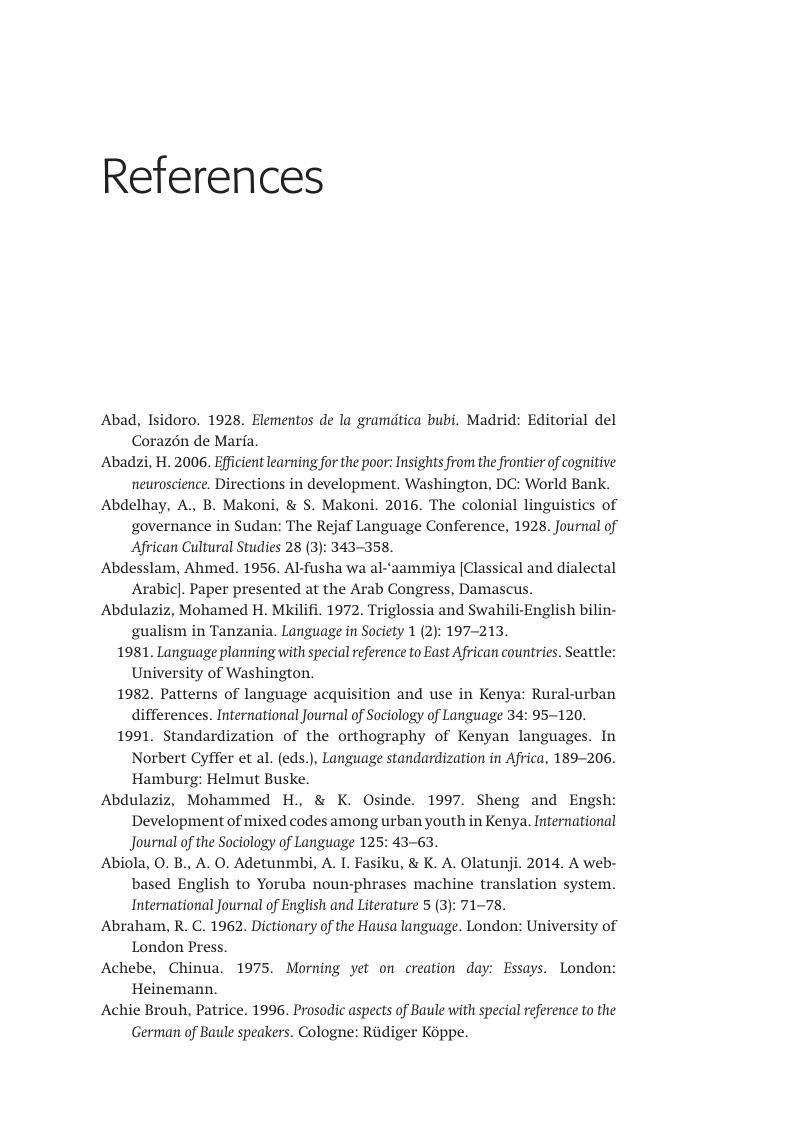Book contents
- The Cambridge Handbook of African Linguistics
- Cambridge Handbooks in Language and Linguistics
- The Cambridge Handbook of African Linguistics
- Copyright page
- Contents
- Figures
- Tables
- Maps
- Contributors
- Preface
- General Introduction
- Abbreviations and Acronyms
- Introduction
- Part I Short Regional Histories of African Linguistics
- Part II Comparative and Descriptive African Linguistics
- Part III African Languages in Cultures and Societies
- Part IV Applied Perspectives in African Linguistics
- References
- Index
- References
References
Published online by Cambridge University Press: 23 May 2019
- The Cambridge Handbook of African Linguistics
- Cambridge Handbooks in Language and Linguistics
- The Cambridge Handbook of African Linguistics
- Copyright page
- Contents
- Figures
- Tables
- Maps
- Contributors
- Preface
- General Introduction
- Abbreviations and Acronyms
- Introduction
- Part I Short Regional Histories of African Linguistics
- Part II Comparative and Descriptive African Linguistics
- Part III African Languages in Cultures and Societies
- Part IV Applied Perspectives in African Linguistics
- References
- Index
- References
Summary

- Type
- Chapter
- Information
- The Cambridge Handbook of African Linguistics , pp. 645 - 781Publisher: Cambridge University PressPrint publication year: 2019

